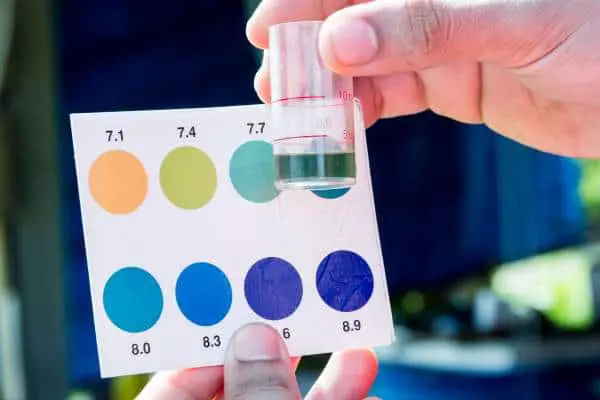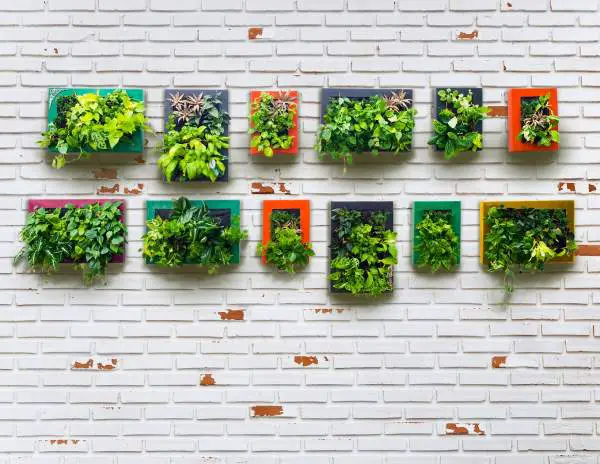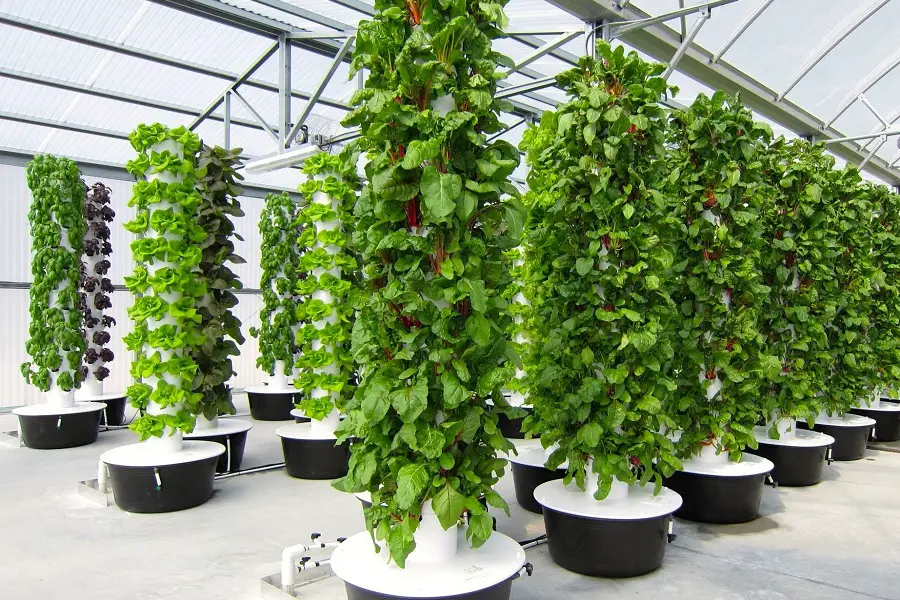When new growers first start a hydroponic system, they often hear terms that sound confusing. One of the hardest to fathom is the pH, while you may not fully understand it in the beginning, it is something, that in theory, can be learned quickly.
In summary, to keep pH levels stable, it can take a few steps and a little effort from the grower. These are the key areas you need to understand.
- Delivering the right supply of water
- Performing water treatment methods in response to the tested levels
- Understanding how the addition of nutrients can affect pH levels.
- Understanding what pH levels your given plants require
When you begin to understand what pH levels are, you quickly learn that they will never remain stable on their own accord. There are too many variables and many external influences that will change the pH level.
To keep the pH stable in hydroponic systems, we strongly recommend using products designed especially for hydroponics. If you don’t have pH down or pH up products specially designed for hydroponics at hand, then you can add weak acids like citric acid or vinegar to control pH in the short term. We recommend investing in an automatic pH controller to make sure that your pH is stable at all times.
To know what pH means to your plants, and how it can affect their growth is the first area you need to understand. After looking at what pH is, we will see how it affects your system, and how you can maintain the correct levels.
Also read: Can You Use Tap Water for Hydroponics?
What is pH?
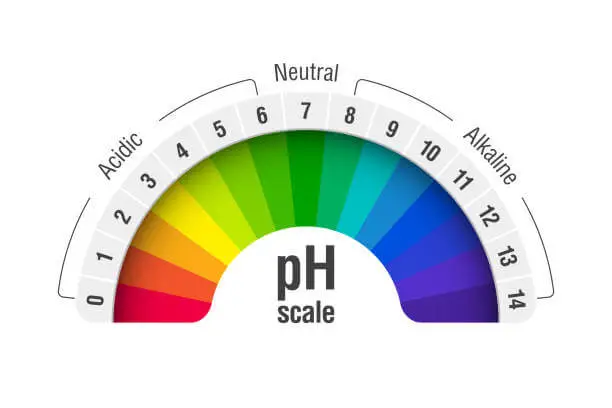
First, up, there is a scale that runs from zero to fourteen. Every liquid will have a different reading against this scale. Plain water as an example has different pH levels depending on the source. Plain water from the faucet will have a different pH to the water in your system; this is because in many cases it is better not to use faucet water when possible.
This scale has zero, which is the most acidic, this runs up to the top (number fourteen), and this is the most alkaline. Most living things like a middle-of-the-road balance, so this is around 7. Not only is this a good starting pH for most plants to thrive, but it is also the right level for the human body.
For plants to thrive at their best, they do favor pH levels, which sit around 5.5 to 6.5. Nevertheless, there are some plants and vegetables which like to go the other side of neutral to a pH of 8. Alkaline substances are soluble salts made up of potassium and sodium carbonate. Alkaline is the scale of the alkali within the solution.
When you have favorable pH levels in your system, this enables your plants to take up all the micro and macronutrients through the root systems. Add to this, you see faster growth in your plants because they have an increased intake of NPK (Nitrogen, Phosphorous, and Potassium).
To go further in-depth on this matter, you can head over to the pH levels Wikipedia page for a detailed breakdown of what these levels mean. This may appear interesting, yet it reaches a little outside what you need to know as a grower.
| Acidic Solutions | pH | Alkaline Solution | pH |
| Battery acid | 1.0 | Blood | 7.35 – 7.45 |
| Gastric acid | 2.0 | Hair shampoo | 8.0 |
| Lemon juice | 2.4 | Sea water | 8.0 |
| Cola | 2.5 | Permanent wave | 8.5 – 9.2 |
| Oxygenated water | 2.5 – 3.0 | Hand soap | 9.0 – 10.0 |
| Vinegar | 3.0 | Hair dye | 9.5 – 10.5 |
| Orange or apple juice | 3.0 | Magic straight | 11.5 |
| Beer | 4.5 | Household ammonia | 11.5 |
| Coffee | 5.0 | Household bleach | 12.3 |
| Milk | 6.6 | Household lye | 13.5 |
| Pure water | 7.0 | Drain cleaner | 14 |
One thing, which is worthy to note, the closer you get to each end of the scale, and the more liquids will burn. It doesn’t matter if it is acidic, or alkaline, so you will need to take caution when dealing with any pH level treatments.
Why pH Levels are Important in Hydroponic Systems?
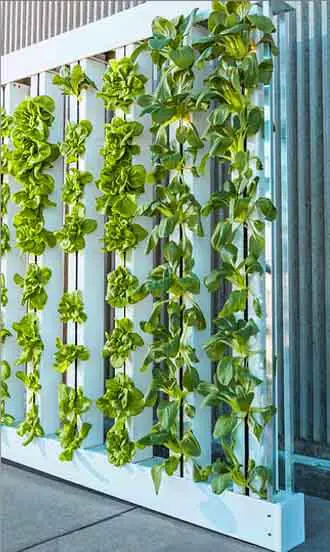
We have seen when pH levels are outside the ideal range for your plants, they run the risk of not absorbing enough nutrients to help them grow. On top of this, it also helps you understand how soluble the salts are in your nutrient mixture.
Every mineral has a different tolerance when it comes to the respective pH level. As a rule of thumb, plants need high amounts of macronutrients. If the pH level is too high or too low, then these become immobile, and it is this that restricts their uptake and leads to nutrient deficiencies.
Micronutrients on the other hand are required in smaller doses. These will be affected on either end of the pH scale. Once your pH is too low, then this means your plants can absorb too many as they are highly soluble. This doesn’t lead to nutrient deficiency; it actually leads to a solution that is toxic to your plants. If you go to a pH that is too high, then you will see a deficiency in micronutrients.
One of the first signs you need to be aware of is young foliage, which is yellowing or pale in color.
In order to keep the pH levels balanced in your hydroponic system, first, you really need to understand the elements that will affect the pH levels.
Growing Medium
Almost everything can affect the pH level in your system. One of the most significant areas will be your growing medium. A good example is calcareous rock, which will release magnesium and calcium into your solution. As soon as they leech into your water, you will need to adjust. Luckily, this isn’t a common growing medium.
Coco coir is very popular, and this can affect pH as they contain sodium chloride. Because of this, this needs to be soaked thoroughly to wash out any residual contaminants.
One other common growing medium is perlite. The pH of this is between 6 – 8, which means it can be added with no significant pH swings in either direction. Rockwool is another favorite and has a pH of between 7 – 8.5. This does require washing before use and an adjustment of the pH once it is in your system
Temperature
There is a lot to learn about solution temperatures, so without going into too much detail hydroponic solutions should be around 65 to 80 degrees Fahrenheit. If it gets much warmer than this, water starts to evaporate faster than the mineral salts.
Once this happens, these begin clinging to the side of your reservoir and thus increase the nutrient to water ratio. You can also find that systems, which have smaller reservoirs, suffer more than a larger reservoirs. Depending on the region you live in, you may require either a water heater or a water cooler to keep your mix at the ideal temperatures.
Plain Water
Hydroponic systems need a sterile environment to function at their best. Water from the faucet isn’t recommended because of the amount of treatment it has been through. Different regions can have hard or soft water, so the base pH will never be standard.
It is a recommendation to use distilled or reverse osmosis water when possible. If this isn’t readily available, you can purchase these reverse osmosis kits which sit in your plumbing system. While these can seem to be a small investment, they can pay for themselves over time.
Here is an example of a reverse osmosis filter system. It can deliver pH-neutral water for drinking, as well as for your hydroponic system.
Setting Up Your Hydroponic System Correctly

Now you understand all the reasons that pH levels are important to your hydroponic system, and the plants you’re growing, it’s time to test your pH levels and get your hydroponic system running before introducing plants into the environment.
If you are still researching, the following will still apply because pH testing isn’t a one-shot thing. In the beginning, you can be doing this on a daily basis until you understand how your system works. To test your pH levels, there are various ways you can do this.
By the use of litmus strips, or digital testers, you can quickly find whether you need to adjust levels up or down.
One thing to note here is that some of the better hydroponic nutrients come with a pH buffer. This takes away any sudden level change to your plants. While you still need to adjust, the extent of what you do will be minimized.
Litmus Strips
Litmus strips are one of the quickest and simplest ways to test the pH in your system. Although they are easy to keep on hand, you shouldn’t rely on them without another means of measuring in place. The way these works is the paper contains a dye, which is sensitive to any liquid it comes into contact with.
To test your system, take a sample of your water in a sterile container. Dip one of the strips into this wait until the color changes. Once there are no more changes, you compare this against a chart, which comes with the litmus pH testing kit.
You may find some of the colors can be hard to distinguish from each other, so trying to guess which one it is, isn’t the best way to be safe. Many plants may not bother with this little difference, yet this half a reading in either direction can affect plants that require a tight tolerance.
You can also find liquid testing kits, which work in the same way. With these, you add the dye to your sample, and then once the sample finishes changing color, you compare this against your chart.
Hydroponic pH Pens
The most reliable option works out the most expensive, however, this is not overly expensive, and it can last much longer than your litmus testing kits. On top of this, you will have a digital readout, so there is no way to make a mistake.
One of the common designs is the digital pH pen. Once you place the nib in your water sample, you get an exact reading, which is precise. One downside with these is that over time, the readings may fluctuate, this means your pH pen requires calibration. If you perform lots of testing, this can be a weekly exercise.
We have written a complete guide to test the pH of your water, we highly recommend understanding the full process to stop your plants from wilting.
Also read: What are the best pH pens for Hydroponics?
Continual Water Treatment and pH Balancing
Now you see the equipment you need to use to test your nutrient solution; we will look at how the varying hydroponic systems can have varying pH levels. One of the more straightforward is NFT (Nutrient Film Techniques) as your solution is in direct contact with the plant’s root systems.
Media-based systems can have readings that vary one way or the other. It is for this reason; you need to take two separate readings. The first needs to be taken from your nutrient reservoir, and the leachate, which is the chemical runoff.
This is necessary because you will have different readings before and after the rooting system. This may not vary too much if you have smaller plants, yet larger plans will mean the variance is much higher.
When adjusting your solution pH levels, the base adjustments in the reservoir need to be adjusted to the readings you obtain from the readings you come up with from the runoff solution. The reason this needs doing is that your plant roots will be facing the pH levels in the solution, which passes them, and not the solution in the reservoir.
Adjusting Your Hydroponic pH Levels
Your pH levels rise and fall for all manner of reasons. Luckily, we have seen how easy it is to fix some of these. We also saw that your nutrients would come with pH buffers when you purchase them from reputable suppliers.
These buffers are a great way to prevent spikes or drops which may shock your plants. Aside from this, these suppliers also offer chemicals that you can use to raise or lower your pH levels. One of the more frequently used comes from General Hydroponics. These have pH UP and pH down you can purchase. Because of the pH sensitivity, you do need to follow recommended doses and take separate readings, in case you need to adjust again.
The aim when making your adjustments is to make sure there is no nutrient lockout. This takes daily readings to be sure your pH level is going in the right direction
When you come to make your adjustments, there are only a few steps you need to take to make these adjustments. The main thing is to be observant of what your readings are.
- Take your first sample and then a reading Depending on the result you obtain, all you have to do is add between 1-2 ml of the pH Up or pH Down solution for each gallon of water you have in your reservoir.
- Once you add this, stir your solution with a clean implement and wait a minimum of 30-minutes so the solution can run around your system. At this point, you can take your next reading.
- You need to repeat these steps as required until you reach the required level. Never be tempted to add more of either chemical to reach the results faster. This will, shock your plants because you may swing too far in either direction.
When you add new nutrients, they will change your pH levels, which is why you will always need to do a new test once these have been added to the new reservoir. Other than that, it is recommended to run your tests more or less at the same time each day. There are a number of natural approaches to tuning your pH if you have no pH Up or pH Down.
This is a very short-term solution and you should only use this if it is absolutely essential. Either white vinegar or citric acid may be used to reduce the pH, whereas baking soda is used to raise your pH levels. When doing this, you will need to know how much of a change there is for the amount you add.
Maintaining pH Level Recap
To summarize all the above, here is a quick recap of everything we have shown. Following these, you can maintain your pH levels and have plants that are continually thriving.
- Check your levels daily until you get to know your system. When you see how things are running, you can reduce your testing to 2 or 3 times per week.
- Even if you can’t afford the best testing kit there is, you should look for the best one you can afford. Litmus tests are handy to use, yet when you attempt to adjust your readings a few times, these are not as quick as pH pens.
- If you spot your pH, levels fall between 5.8 – 6.5. You should not be tempted to make any adjustments. This reading is ideal for most plants that you may be growing.
- Solutions which have a high pH need adjusting with pH Down.
- Levels, which are low, need adjusting with pH UP.
- Keep records of your testing and how much solution you add into your reservoir.
Overdosing with pH adjusters or nutrients is highly harmful to plants. On top of this, if you have a solution that drops in your reservoir, the pH change at the same time. Even topping up with water will have an effect, so be sure all your readings are when you have a full tank.
Growers who understand what their plants need, and how to adjust to keep them healthy will have some of the best crops when harvest arrives. Any grower who thinks this isn’t important may face a catastrophe.

